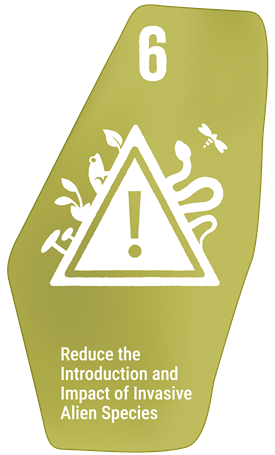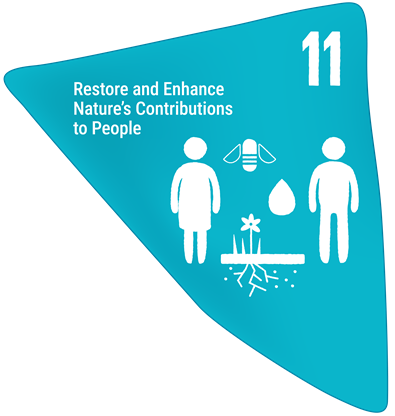 International Plant Protection Convention
International Plant Protection Convention
International Day of Plant Health-- 12 May 2024
Plants make up 80 percent of the food we eat and 98 percent of the oxygen we breathe. They are essential to not only our health, but our survival. Needless to say, plant biodiversity needs to be a priority.
Globally, more than 240 million containers are shipped between countries, carrying different goods, including some plant products, and some form of wood packaging materials. Unfortunately, this high volume of movement can also unintentionally move pests across borders in the form of seeds, snails, slugs, soil, spiders, and numerous other biosecurity risks.
The Convention on Biological Diversity cooperates with the International Plant Protection Convention (IPPC) to coordinate efforts to prevent the control the introduction and spread of plant pests. The IPPC addresses plant pest risks and that could include invasive alien species. Currently, global economic losses caused by invasive pest species are estimated at approximately USD 220 billion per year.
The Cartagena Protocol on Biosafety to the Convention on Biological Diversity is a supplementary protocol to the Convention. The Cartagena Protocol contributes to an adequate level of protection in the safe transport, handling and use of living modified organisms resulting from modern biotechnology that may have adverse effects on biodiversity, taking into account risks to human health. Biotechnology applications are often used as part of integrated pest control programmes in agriculture. In this regard, countries applying such approaches do so in a manner that is consistent with the provisions of the Cartagena Protocol on Biosafety.
The Kunming-Montreal Global Biodiversity Framework, or The Biodiversity Plan, has 4 goals and 23 targets to halt and reverse biodiversity loss and build a healthy future for generations to come. Urgent and effective implementation of the Biodiversity Plan will be important for ensuring plant health, safe trade and digital technology priorities. Specifically, Target 6 to reduce the introduction of invasive alien species and minimize their impact, Target 11 to restore, maintain and enhance nature’s contributions to people, and Target 17 to strengthen biosafety and distribute the benefits of biotechnology are crucial to the plant health agenda.
The Biodiversity Plan also takes a One Health approach, among other holistic approaches, based on science, in order to mobilize multiple sectors, disciplines, and communities to work together and aim to sustainably balance and optimize the health of people, animals, plants, and ecosystems.
More information:
Related Targets in The Biodiversity Plan
Eliminate, minimize, reduce and or mitigate the impacts of invasive alien species on biodiversity and ecosystem services by identifying and managing pathways of the introduction of alien species, preventing the introduction and establishment of priority invasive alien species, reducing the rates of introduction and establishment of other known or potential invasive alien species by at least 50 per cent, by 2030, eradicating or controlling invasive alien species especially in priority sites, such as islands.
Why is this target important?
Invasive alien species are one of the main direct drivers of biodiversity loss. In some ecosystems, such as islands, invasive alien species are the leading cause of biodiversity decline. Invasive alien species affect biodiversity by competing with native species for resources, by direct predation or by introducing pathogens. They also modify the composition and structure of ecosystems, reducing the services they provide. In addition to their environmental impacts, invasive alien species pose a threat to food security, human health and economic activities. Globalization and an associated increase in human-mediated activities, such as international transport, trade and tourism, have made the movement of species beyond natural bio-geographical barriers easier and quicker, by creating new introduction pathways. Due to the wide and crosscutting impacts of IAS, including environmental, economic, health, social and cultural impacts, it is necessary to strengthen collaboration across sectors and government agencies at all levels and areas to ensure that this threat is managed effectively.
Links to other elements of the Biodiversity Plan and other frameworks and processes
- Actions to reach Target 6 should take into account all of the considerations for implementation identified in section C of the Kunming-Montreal Global Biodiversity Framework.
- Progress towards this target will help to reach Goal A of the Kunming-Montreal Global Biodiversity Framework. In addition, progress towards this target will help to address Target 4 and, depending on the sites and pathways prioritized, could also help to reach targets 2, 3, 10, and 12. Conversely progress towards targets 1,14, 17, 19, 20, 21, 22 and 23 could help in reaching this target.
- Target 6 addresses issues previously addressed under Aichi Biodiversity Target 9
- Elements of Target 6 are also addressed in the targets of the Sustainable Development Goals, including Target 15.8

Click here for more information about Target 6
Restore, maintain and enhance nature’s contributions to people, including ecosystem functions and services, such as regulation of air, water, and climate, soil health, pollination and reduction of disease risk, as well as protection from natural hazards and disasters, through nature-based solutions and/or ecosystem-based approaches for the benefit of all people and nature.
Why is this target important?
Nature’s contributions to people, a concept similar to and inclusive of ecosystem services, refers to all the contributions from biodiversity to people’s well-being or quality of life. These contributions take various forms, including material contributions, regulating services and other non-material contributions including spiritually and culturally. As a result of the ongoing decline of biodiversity, nature’s contributions to people are also in decline, with serious implications for human well-being and social cohesion. The restoration, maintenance and enhancement of nature’s contributions to people provides an important rational for the conservation and sustainable use of biodiversity.
Links to other elements of the Biodiversity Plan and other frameworks and processes
- Actions to reach Target 11 should take into account all of the considerations for implementation identified in section C of the Kunming-Montreal Global Biodiversity Framework.
- Progress towards this target will support the attainment of goals A and B of the Kunming-Montreal Global Biodiversity Framework. Progress towards this target will be facilitated through the actions taken to reach the other targets of the Global Biodiversity Framework, in particular those targets addressing the direct drivers of biodiversity, namely targets help to reach targets 2, 3, 5, 6, 7, 8, 9, 10 and 12.
- Elements of Target 11 were previously addressed under Aichi Biodiversity Target 14.
- Elements of Target 11 are also addressed in the targets of the Sustainable Development Goals, including targets 1.5 and 15.4

Establish, strengthen capacity for, and implement in all countries biosafety measures as set out in Article 8(g) of the Convention on Biological Diversity and measures for the handling of biotechnology and distribution of its benefits as set out in Article 19 of the Convention.
Why is this target important?
Biosafety measures are indispensable for ensuring that living modified organisms resulting from biotechnology are handled and used with the necessary safety precautions. Living modified organisms resulting from biotechnologies provide opportunities, but their use and release requires regulation, management and control of potential associated risks. New biotechnological developments are providing ever more promising opportunities, however the concerns over these technologies and the living modified organisms resulting from them are also increasing.
Participation in biotechnological research by those Parties, especially developing country Parties, providing the genetic resources for such research would help empower them to address their own research needs. In addition, equitable access by Parties, in particular developing country Parties, to the results and benefits of biotechnologies based on genetic resources provided by these Parties would enable countries to benefit from technological advances based on genetic resources, providing a powerful incentive for conservation.
Links to other elements of the Biodiversity Plan and other frameworks and processes
- Actions to reach Target 17 should take into account all of the considerations for implementation identified in section C of the Kunming-Montreal Global Biodiversity Framework.
- Progress towards this target would help to reach goals A, B, C and D of the Kunming-Montreal Global Biodiversity Framework. Similarly, progress towards this target would help to reach targets 4, 6, 7, 8, 10 and 13. Conversely, progress towards targets 14, 15, 18, 19, 20, 21, 22 and 23 would help to reach this target.
